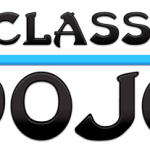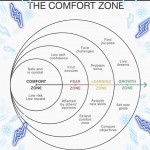With so many educational terms being thrown around on a day-to-day basis it can be difficult to keep track of all the new vocabulary coming our way. We have name-dropped so many acronyms and one-word hit wonders in education, have we lost what we’re really supposed to be doing? Or is the issue we don’t even worry about the terms anymore because it is a trend and we believe it is going to go away with the next wave of change?
It’s like sitting in a data meeting where someone says, “We have been working to increase the rigor through differentiated learning techniques, and UDL that expand student’s inquiry-based thinking while ensuring we are staying true to the standards in order for us to bridge the achievement gap and ensure growth.
I have heard this phrase over and over, but I wonder, what does this really mean? Are we trying to decrease the achievement gap? Or are we focused on ensuring that lessons don’t stay at a surface level and have the depth needed for students to learn? Or is the point that students have questions and we’re changing the focus from base level questions to questions that allow students to really think? Either way, with all of these terms, acronyms and really competing interests, how is it that new teachers ever learn the lingo?
I started thinking about another term we drop often – specially designed instruction. According to IDEA regulations, “specially designed instruction” is “adapting, as appropriate to the needs of an eligible child under this part, the content, methodology or delivery of instruction,” (United Federation of Teachers) and it is the most important job of the resource teacher.
This is the term a special education team uses when a student qualifies for services in order to define what it is that we are going to be doing for the student. It’s the learning that we, as special education teachers, map out in order to meet the needs of a student who has an achievement gap. Are we though? Are people in special education creating, “special,” lessons that meet students unique learning needs? Or are we just hoping that something we differentiate will stick? In a complicated world of student needs, how do we specially design anything when a special education teacher is teaching three or more grades, has a range of disabilities and who has to become a content expert in more subjects than any other teacher?
Is it really special? Is it different? Or is specially designed instruction really great teaching strategies that open up the door for a student to learn the same standard as their general education peers? I think it is the later. It is really great teaching strategies and access points implemented with fidelity that work to ensure a student is able to learn the same grade level standard their general education peers are learning and feel success.
If I have a student who struggles in basic reading, then, I’m going to look at the specially-designed instruction which might mean teaching the student to read sentences, words and passages with different spelling patterns. If a student is struggling with blends, long vowel e words and digraphs, then that is my specially designed instruction. Or if the student has a gap in reading words that don’t have a spelling pattern to them, my specially designed instruction is going to be around irregular spelled words and sight words. I’m going to use the curriculum to find areas where students have access to irregularly spelled words in context and have them practice reading. My specially designed instruction is going to be systematic practice where the student is reading in context irregularly spelled words. I’m not going to work on reading fluency, basic reading and reading comprehension because the special part of the specially-designed instruction matters.
While we might have hundreds of acronyms and hundreds of words we name drop. This one is important, and it is essential I think that teachers really understand what this means. It is the difference between success and failure for some students. For more suggestions or ways to utilize specially-designed instruction, check out, http://www.uft.org/teaching/specially-designed-instruction.









